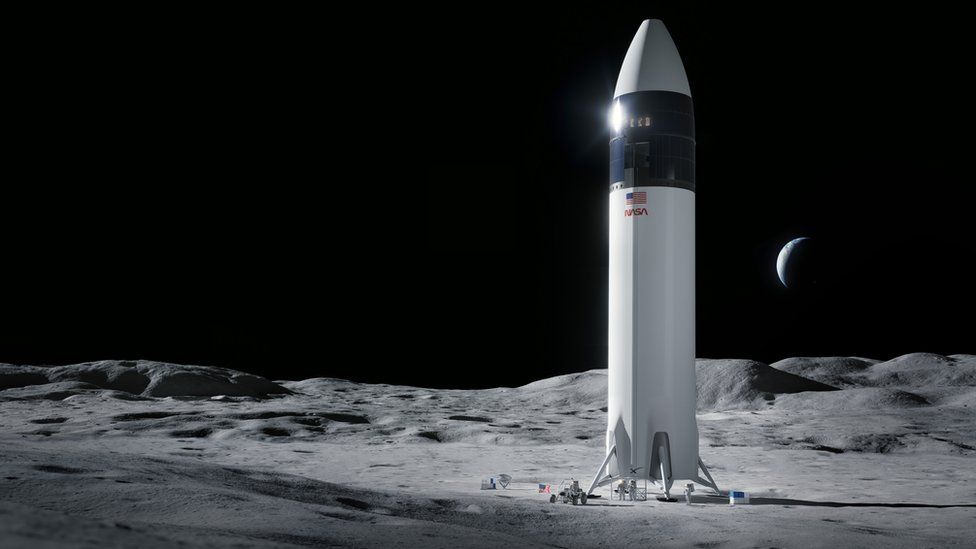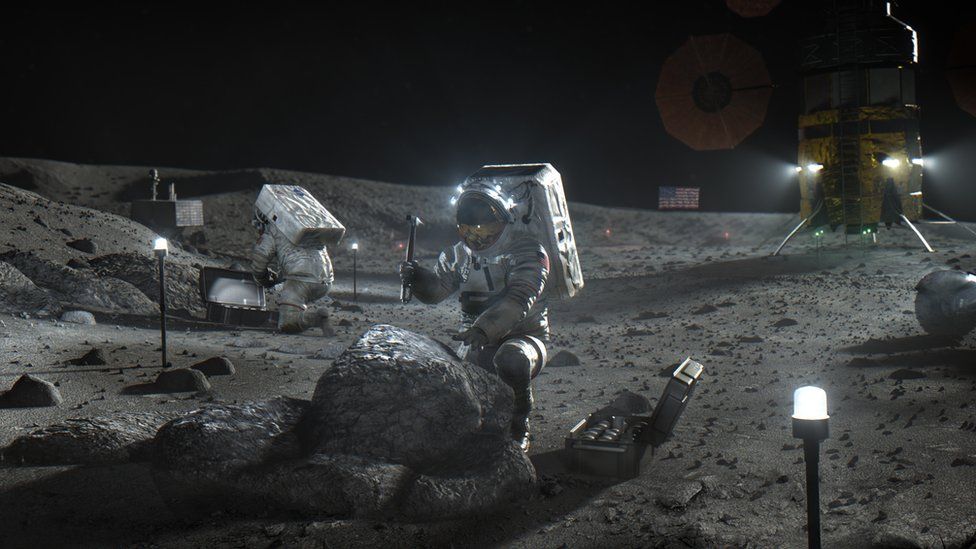Nasa has chosen Elon Musk's company SpaceX to build a lander that will return humans to the Moon this decade.
This vehicle will carry the next man and the first woman down to the lunar surface under the space agency's Artemis programme.
Another goal of the programme will be to land the first person of colour on the Moon.
The lander is based on SpaceX's Starship craft, which is being tested at a site in southern Texas.
SpaceX was competing for the $2.89bn contract against a joint bid from traditional aerospace giants and Amazon founder Jeff Bezos.
"With this award, Nasa and our partners will complete the first crewed demonstration mission to the surface of the Moon in the 21st century as the agency takes a step forward for women's equality and long-term deep space exploration," said Kathy Lueders, the organisation's head of human exploration.
"This critical step puts humanity on a path to sustainable lunar exploration and keeps our eyes on missions farther into the Solar System, including Mars."
Elon Musk has been developing the Starship design for years. Resembling the rocketships from the golden age of science fiction, Starship is a crucial component of the entrepreneur's long-term plans for settling humans on Mars.
For now, though, it will serve as the lander that ferries astronauts from lunar orbit to the surface.
With a spacious cabin and two airlocks, allowing astronauts to exit the craft for moonwalks, it's a far cry from the cramped, spindly lunar module (LM) that carried 12 men to the surface under the US Apollo programme between 1969 and 1972.
The new vehicle will be known as the Human Landing System (HLS).
For its first foray to the lunar surface since then, Nasa is targeting the Moon's South Polar region. This area holds abundant deposits of water-ice. But it also presents challenges, because areas of shadow obscure surface features as the craft comes down to land.
Nasa will need to navigate the problem as it refines its plans for the first landing mission, known as Artemis-3.
SpaceX had been in a run-off against the National Team, consisting of Blue Origin (founded by Bezos), Lockheed Martin, Northrop Grumman and Draper, and Huntsville, Alabama-based Dynetics.
"This is an exciting time for Nasa and especially the Artemis team," said Lisa Watson-Morgan, programme manager for the Human Landing System at the agency's Marshall Space Flight Center in Huntsville.
"During the Apollo programme, we proved that it is possible to do the seemingly impossible: land humans on the Moon. By taking a collaborative approach in working with industry while leveraging Nasa's proven technical expertise and capabilities, we will return American astronauts to the Moon's surface once again, this time to explore new areas for longer periods of time."


